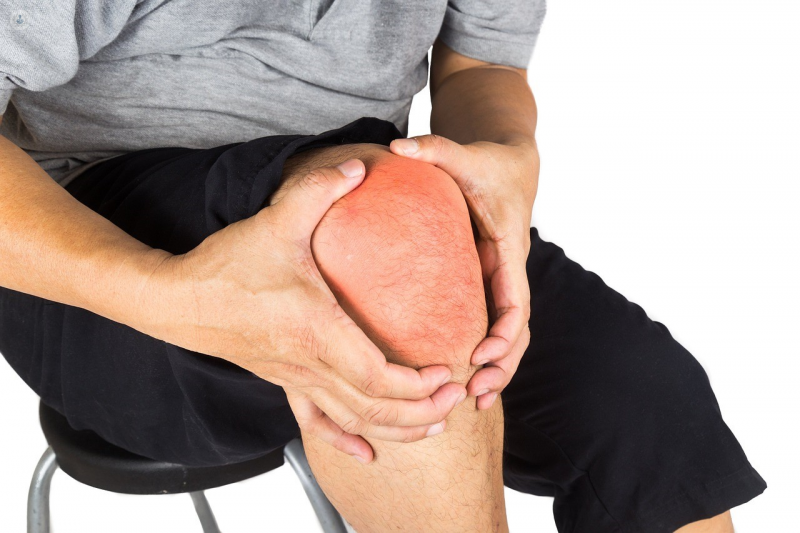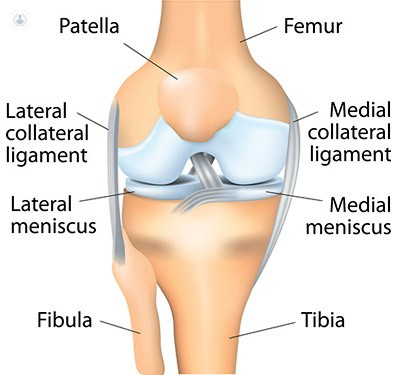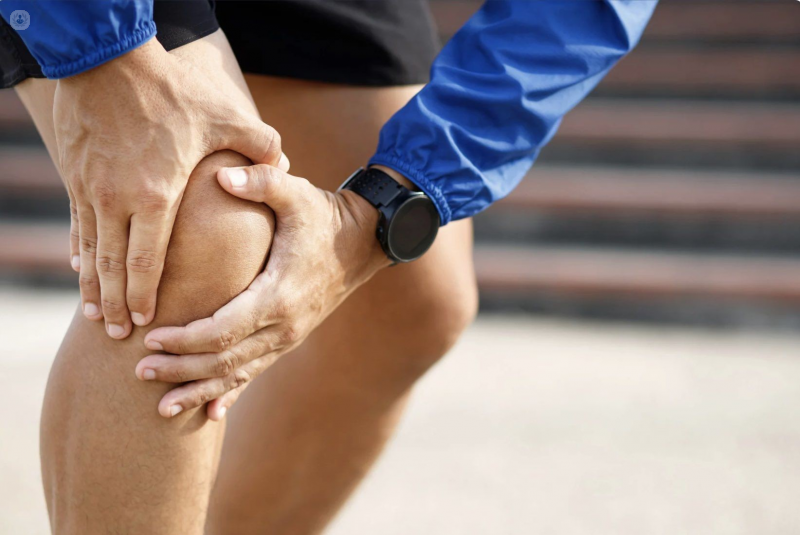Understanding your knee pain
Escrito por:Knee pain is a common issue that affects individuals of all ages and activity levels. Whether it’s discomfort from an old injury, pain during physical activity, or symptoms associated with arthritis, understanding the causes, assessment methods, and treatments for knee pain is essential for effective management. This guide provides a comprehensive overview of knee pain and the options available to address it.

Basic knee anatomy
The knee is a complex and vital joint that allows for bending, straightening and stability. Its structure includes:
- Bones: The femur (thigh bone), tibia (shin bone), and patella (kneecap) form the joint.
- Cartilage: The menisci (crescent-shaped discs) cushion the joint, while articular cartilage covers the ends of the bones for smooth movement.
- Ligaments: The four primary ligaments—ACL, PCL, MCL, and LCL—provide stability.
- Tendons: Tendons connect muscles to bones, including the quadriceps and patellar tendons, which are essential for knee movement.
- Bursae: Fluid-filled sacs that reduce friction within the joint.

Common causes of knee pain
- Athletic injuries
- Sudden movements, repetitive strain, or trauma during sports can lead to ligament tears (e.g., ACL tears), meniscal damage, or conditions such as tendinitis.
- Degenerative conditions
- Conditions like osteoarthritis, common in older adults or those with a history of joint stress, cause cartilage wear and tear, leading to inflammation, stiffness, and pain.

Specific structures linked to knee pain
- Ligament injuries: ACL and MCL tears cause instability and swelling.
- Meniscal tears: Damage can lead to catching, locking, or pain during movement.
- Arthritis: Conditions like osteoarthritis, rheumatoid arthritis or gout often result in chronic pain and swelling.
- Tendinitis and bursitis: Inflammation in tendons or bursae can cause localised pain.
- Patellar issues: Problems like chondromalacia patella or patellar tracking disorders can affect kneecap movement.
Diagnosing knee pain
- History and physical examination
- A detailed discussion of symptoms and activities helps identify potential causes. During a physical exam, range of motion, strength, stability, and areas of tenderness are assessed.
- Imaging studies
- X-rays: Useful for detecting fractures, bone alignment, and arthritis.
- MRI scans: Provide detailed images of ligaments, cartilage and tendons to identify injuries or degeneration.
Treatment options
- Conservative treatments
- Rest and activity modification: Reducing activities that worsen symptoms.
- Physiotherapy: Exercises to strengthen muscles around the knee for better stability.
- Medications: Pain relievers and anti-inflammatory drugs.
- Injections: Corticosteroids reduce inflammation, while hyaluronic acid can improve joint lubrication.
- Surgical treatments
- Arthroscopy: A minimally invasive procedure to repair or remove damaged tissue.
- Joint replacement: Reserved for severe arthritis or structural damage.
Seeking professional care
If you are experiencing knee pain, it’s important to seek professional advice. A healthcare provider can assess your symptoms, determine the cause, and develop a personalised treatment plan to restore your mobility and quality of life. Don’t wait—take the first step towards better knee health today.


